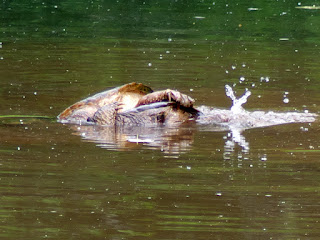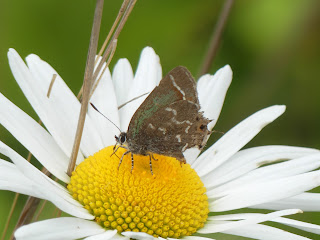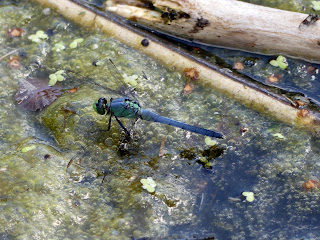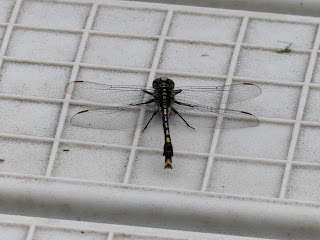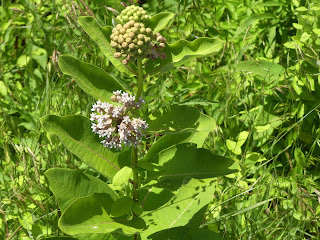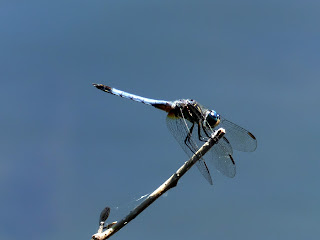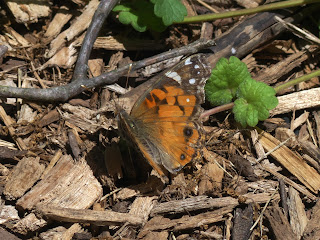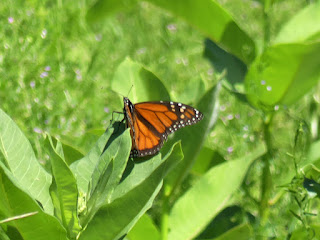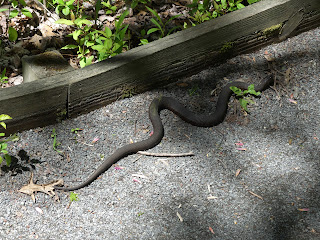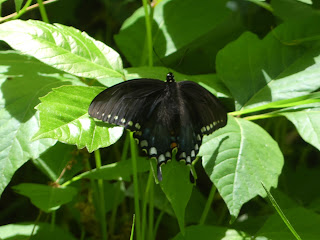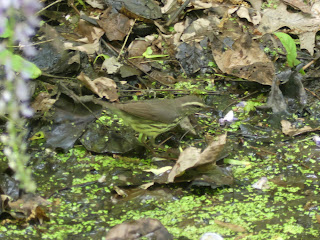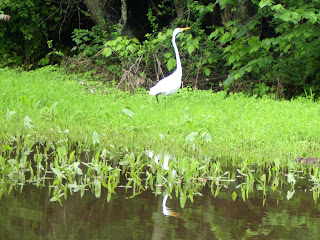Carolina Saddlebags
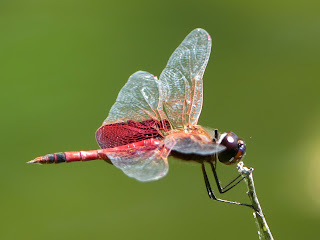
Here's someone I don't think I've seen before, or if I did I was unable to get a picture of it. The latter is probably more likely, since my field guide says the Carolina Saddlebags is "common", and also mentions that saddlebags don't perch much but instead spend a lot of time zipping around in the air. Despite zipping around, these largish bright red dragonflies are likely to get your attention. They get the "saddlebags" part of their name from the large (in this case red) basal spot on the hind wings, which made it look like (to someone familiar with horses) the dragonfly had saddlebags . (In actuality dragonflies have few possessions, and thus no need for a saddlebag with which to carry them.) There is a very similar saddlebags dragonfly, the Red Saddlebags, that's occasionally seen in the southern tip of New Jersey. Even though this dragonfly would be out of range in Hillsborough, there are reasons to believe this is the Carolina Saddlebag...
